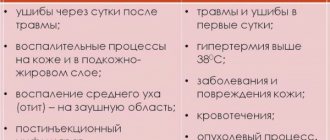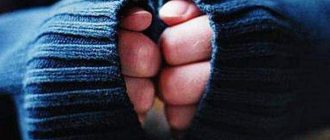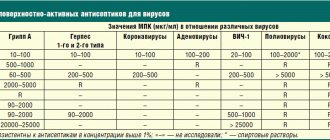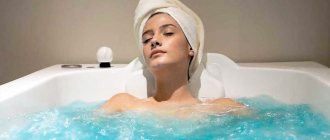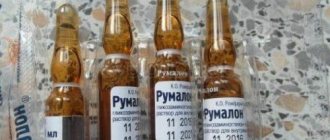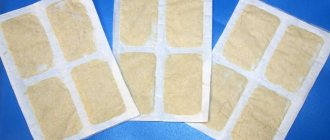Medical massage is one of the effective physiotherapeutic methods of treatment and recovery. Massage relaxes muscles and tones tissues, improves joint function, and stimulates blood circulation. The procedure prevents lymph stagnation and swelling, fights pain, and has a calming and relaxing effect.
How did massage appear and why was the attitude towards it controversial?
The word “massage” comes from the French language (masser - to rub). Moreover, the procedure itself was known even to primitive peoples. The first official evidence of massage techniques appeared in Ancient China, in the 3rd millennium BC. Even then, there were medical and physical education educational institutions, where one of the disciplines was massage.
During the Middle Ages, massage therapists were subjected to severe persecution. The Holy Inquisition was convinced that pain relief and healing through the touch of hands was a clear sign of the devil. Witch doctors were declared sorcerers and witches and burned at the stake. Only 300 years ago in Europe the works of scientists about massage and its healing properties began to appear again.
Fortunately, in our country there has never been a bias towards the procedure, and therefore the methodology has developed over many centuries. In Ancient Rus', massage was revered both as a full-fledged healing tool and as a pleasant element when going to the bathhouse (rubbing, patting with a broom). Nowadays, massage is recommended for the prevention and treatment of many diseases, and along with manual methods, modern hardware technologies are appearing.
Professional Responsibilities
The main responsibilities of a massage therapist include:
- preparing the client for the procedure;
- performing the required type of massage manually or using special devices;
- a combination of massage with manual therapy, physical therapy or other procedures prescribed by a doctor;
- monitoring the patient’s condition during the procedure;
- consulting visitors;
- compliance with hygiene standards in the office and safety precautions;
- maintaining relevant documentation;
- providing first aid if necessary.
Of course, the specific functions performed by a children's massage therapist, a beauty salon worker, or a member of a national cycling team differ very much, as do the types of influence they use on a person.
A massage therapist in a clinic, a massage therapist in a beauty salon, a chiropractor: what’s the difference?
The massage therapist works on the patient's body with his hands, kneading, patting, stroking, rubbing, shaking, pressing, rolling and vibrating. Unlike a chiropractor, he does not have the right to prescribe treatment or realign joints and vertebrae.
A “manual specialist” is a doctor who graduated from a medical school, residency or internship in the specialty “neurologist” or “traumatologist-orthopedist”. In addition, such a doctor has additionally completed a specialized retraining program in manual therapy.
A massage therapist in a medical clinic is a specialist with a secondary medical education in the specialties “therapeutic physical education”, “medical massage”, “nursing”, “physical rehabilitation and recreation”, “massage nurse”. An option with retraining is possible, but only if you have a secondary medical education. Such a specialist has the right to conduct medical, sports, myofascial and other types of massage. Without confirmed qualifications, a person will not be able to perform such procedures and get a job in a clinic. If this norm is violated, then according to Article 69, Article 323 of the Federal Law, the person bears criminal liability.
A massage therapist in a beauty salon, as a rule, does not have a medical education and provides non-medical massage (cosmetological, relaxing). The theoretical and practical knowledge base of a specialist is limited to short-term courses (53-72 academic hours). In this case, the quality of services is practically not confirmed by anything other than the reputation of the salon.
Fifth sense
We often place so little importance on the sense of touch. Or we remember it, meaning the tips of our fingers, with which we usually obtain maximum tactile information about objects. But what about the rest of the body? After all, it feels everything, entirely! Our arms, legs, back and heels feel hard and soft, sharp and gentle touches. All these touches through the surface of the body affect the entire body! Today's parents know how important it is to caress their baby, stroking and patting his little body, and how much joy and confidence this brings him. But the trick is that this circumstance does not change with age - we just often lose sight of it.
Here are some interesting facts:
· If you lightly grab a person's hand, his heart rate will slow down and his blood pressure will drop.
· In children and adolescents hospitalized for mental disorders, excitability noticeably decreases and positive changes occur in the perception of the surrounding reality if they lightly rub their backs for a short time every day.
· Rabbits fed a cholesterol-rich diet and given regular affectionate caresses have 60% less arterial blockage than rabbits fed the same diet but deprived of affection.
Touching the body, stroking, rubbing are a kind of message: “You are alive, dear body, we love you, we want you to be healthy and joyful!” - and the body reciprocates. Especially when it comes to systematic rubbing and stroking, such as massage.
As an experienced masseuse said, kneading the body of my two-month-old eldest son: “You know, it happens that parents treat the baby, take him to doctors, take medications, but there is little improvement. But often it is worth prescribing a course of general massage for the child - and super-recovery begins: all body systems are activated, immunity is increased and the child gets out of sores.”
Why go for a medical massage?
If you experience a feeling of muscle tension and pain in the back, neck, limbs, if you have severe physical and psychological stress, if you notice poor posture - all this is a reason to think about a massage course. The procedures will also be useful during rehabilitation after injuries, problems with the gastrointestinal tract, respiratory diseases, a general decrease in immunity and increased fatigue.
Before enrolling in a medical massage course, you must consult with your doctor. The specialist will determine the required number of sessions (usually 10-15 procedures) and draw up an optimal schedule of procedures. For some diseases, sessions should be daily, for others - with an interval of 2-3 days. The doctor draws up a plan based on your medical history, age, condition, and you must follow the recommendations, because otherwise you can harm yourself.
Remember that massage is not a magic pill. One session is not enough to get rid of any ailments, even if you go to see a highly qualified specialist. It is not advisable to interrupt the course, because in this case it is almost impossible to achieve the desired effect.
Manual massage: features and specifics
The specificity of this procedure is considered to be an improvement in the blood supply to the body in the absence of a phenomenon accompanying this process - the accumulation of lactic acid in the muscles, which provokes the appearance of pain symptoms. The features of hand massage also include the possibility of combining various techniques to enhance the effect, as well as the use of additional tools.
The duration of the procedure varies and can take 10-15 minutes or as long as 1.5 hours. The session time is set individually and depends on:
- the purpose of the procedure;
- gender, weight and age of the patient;
- task volume (zone size);
- diagnostic results;
- indications for the procedure.
It usually takes about 15-25 minutes to work on one area of the body. During this time, you can do a full manual massage of the neck, back, and lower back. A massage therapist can spend 20-30 minutes on the procedure for the lower extremities, and 15 minutes for the upper extremities (1 hand ~ 7 minutes). The area of the chest and abdomen is usually taken away from the massage therapist for 15 minutes. The total duration of the session does not include the time during which the person prepares the patient’s body for the session.
Indications for medical massage
The procedures will help in getting rid of many ailments: from obesity to flat feet. Medical massage is recommended for all types of injuries to the musculoskeletal system (fractures, dislocations and sprains of joints, muscle spasms, all kinds of sprains and overloads of muscles and joints, torsion or rupture of ligaments). The course brings relief with:
- degenerative diseases of the spine and other dysfunctional diseases of the skeletal system;
- arthritis and tendonitis;
- diseases associated with respiratory failure;
- rehabilitation after muscle paralysis and peripheral nerve damage;
- neuroses and stress;
- osteochondrosis;
- stomach ulcers and gastritis;
- atherosclerosis;
- neuralgia;
- coronary disease;
- diabetes, etc.
The type of massage is selected depending on the pathology. The impact can be both general and local (aimed at restoring a specific function).
Classic massage technique
Traditionally, classical massage uses stroking, rubbing, kneading and vibration . First, the massage therapist gently warms the skin, stroking it, preparing it for the further procedure. Over time, the movements become more intense. Kneading increases muscle tone, improves posture and strengthens the muscle corset. Vibration strengthens blood vessels and also affects the deep subcutaneous layers.
Auxiliary techniques of classical massage include tapping and squeezing . Effleurage resembles vibration, but is performed with the knuckles. Such movements have a beneficial effect on the nervous system. Squeezing is similar to intense stroking. It has a lymphatic drainage effect.
There should be no unpleasant sensations during the massage. If the patient feels pain, he should report this to a specialist.
The classic massage technique has a number of features:
- The patient should be as relaxed as possible . Therefore, before the procedure, the specialist will prepare the room. The temperature should be comfortable.
- Both the patient's body and the massage therapist's hands must be clean . Before the massage, it is advisable to take a shower and use a scrub.
- Be sure to use creams or oils for massage . They make it easier for hands to glide over the skin, saturate it with nutrients, and increase elasticity.
- Movements during the procedure are divided into linear, zigzag, dash-shaped, and circular. A classic massage begins and ends with stroking .
Some massage therapists use incense and pleasant music to help the patient relax. To get a good result from a massage, you need to contact only experienced specialists who have undergone training.
The session takes from 40 to 90 minutes depending on the type of massage, its goals, the patient’s age and other features.
Massage directions for each part of the body
- Stroking and rubbing are performed only in the direction of movement of the lymph flow.
- Hands are massaged in the direction from the hands to the axillary lymph nodes.
- During abdominal , all movements should be made only clockwise.
- The neck should be stretched towards the collarbones, not towards the head.
- When massaging the legs , the specialist moves from the feet to the knee hollows and from the knee to the groin.
- The breast is massaged from the center to the axillary lymph nodes.
- The lower back should be kneaded very carefully, without strong pressure towards the groin area.
Contraindications for medical massage
Massage cannot be performed in some cases. Namely:
- skin diseases;
- immediately after a bone fracture and tendon rupture;
- increased body temperature;
- tumor diseases;
- phlebeurysm;
- hemorrhage, hemophilia, hemorrhagic diathesis;
- developed atherosclerosis;
- advanced stages of hypertension;
- infectious diseases.
Some patients feel weak after the session, observe redness of the skin and make the erroneous conclusion that massage is contraindicated for them. This reaction is just a side effect, which manifests itself less intensely in some and more intensely in others. But after the procedure there should not be a feeling of total “overwhelm” and complete powerlessness, dizziness, or a sharp rise in temperature. Such a response from the body indicates the incompetence of the massage therapist.
Required number of wellness massage sessions
To achieve a significant effect, it is advisable to carry out a wellness massage complex. A single procedure will not give long-term results, but will only alleviate the condition for a while.
A course of healing massage of the back or other parts of the body usually includes from 8 to 15 procedures. Please note that you can save money by purchasing the entire package rather than paying for each session individually.
Thai massage can compete with the classic massage. This technique, which came from Asia, can be suitable not only as a healing massage for men. Its unique atmosphere and many additional bright details will help you relax, improve your body’s condition and serve as a healing massage for women. The result in the form of improved well-being in this case is achieved effectively in the same number of sessions.
Any procedure, including a wellness facial massage, is an investment in your health, performance and appearance. Such an investment will definitely yield a positive result. However, you need to choose a salon or clinic based not only on its location and cost of services. First of all, you should pay attention to the reputation and professionalism of specialists.
What to look for when choosing a massage therapist
Incompetent massage therapists are a big problem in the medical world. Such specialists have harmed the health of many people. There are several signs that this is not a medical professional who is trying to help, but a person aimed solely at commercial gain.
You should be wary if the massage therapist:
- gives a 100% guarantee of complete recovery;
- says that there are no contraindications to massage;
- promises, using the author’s method, to remove all toxins and waste from the body in 3 sessions, get rid of 10 kg of excess weight with one touch, etc.;
- insists on replacing the treatment prescribed by the doctor with dietary supplements and other magic pills;
- names the exact duration of the course in absentia.
Remember that medical massage is a fairly serious physiotherapeutic procedure in which such negligence is unacceptable. Do not risk your health, contact a medical institution, and not dubious specialists.
Our Clinic has professionals with many years of experience and medical education. They are well versed in anatomy, neurology and other fields, which help them form a correct idea of what processes occur in your body. Your health is in good hands here.
And the last point of a professional massage therapist: a constant desire to learn and interest in the work.
Basically, these are 2 different aspects, but they go hand in hand.
It is impossible to constantly learn something without passion and interest in it. You should find it interesting to watch and experience other massages. Learn if you don't understand something. Study if you feel like you are stalling. Learn if you have been stuck in a massage routine for a long time.
This point is like Schrödinger's cat. All pros have it by default, that's why they're pros. And those who did not stay in the profession of massage therapist do not have it.
If you believe in any esoteric crap, you can consider it "getting on the path." If the path is not yours, then you will turn away from it, but if you take your own path, then you will go cheerfully and cheerfully.
That's all.
Let's summarize:
How to prepare for a session
To achieve maximum healing effect and feel comfortable, it is recommended to follow several rules.
Namely:
- take care of hygiene;
- do not wear jewelry that may interfere with the specialist’s manipulations;
- give up perfume;
- eat no later than 1 hour before the procedure;
- Avoid epilation of legs and other areas on the eve of the procedure - massage oil can get into micro-wounds and provoke inflammation;
- if exposure is expected in the abdominal area, you need to eat no later than 3 hours before the procedure.
During the session, you need to relax as much as possible so that the massage therapist can work on the skin and muscles without encountering muscle resistance. After completing the procedure, you should lie quietly for several minutes.
Who is it suitable for?
Before becoming a massage therapist, you need to clearly determine whether this profession is right for you. Both a man and a woman who have calmness and self-confidence, responsibility, sociability, goodwill and the ability to find an approach to each patient, attentiveness, balance, and the desire to constantly develop and learn can become a massage specialist. Physical strength and endurance are important, because the work involves heavy loads.
Mandatory conditions for high-quality massage:
- Deep knowledge of human anatomy and physiology. A good master thoroughly knows the location of every muscle, nerve or lymph node, and blood vessel in the human body. If you do not have this information, you can seriously harm the patient.
- Basic massage techniques and the effects of each technique on the body.
- Indications and contraindications – both general and specific for each patient.
- Rules for working with equipment and devices for massage.
- The advisability of using different oils during exposure to the skin.
- The ability to listen to the client, determine his problem and offer the most suitable service.
Let's consider the pros and cons of the profession. Let's start with the good. The advantages of being a massage therapist are:
- high demand for the profession;
- the possibility of self-realization;
- good income;
- low competition in the market for a certified specialist;
- the opportunity to work for yourself and plan your time;
- constant communication with a variety of people.
Difficulties and disadvantages include:
- physical fatigue after working with several clients;
- the possibility of acquiring occupational diseases over time: problems with the joints of the hands, the spine, varicose veins in the legs;
- high level of responsibility for the results of their work;
- the need to constantly search for clientele;
- regularly improve the level of your professional knowledge and study new methods of influence;
- possible problems with dissatisfied customers.
What methods of influence will the massage therapist use?
Medical massage includes many techniques and methods. The nature of the effect depends on the patient's medical history and condition. For example, procedures after an injury can be combined with cold exposure - this helps relieve swelling and increase joint mobility. However, several types of medical massage can be distinguished:
- Classic . Performed using oil, it is based on the use of basic massage techniques. The nature of the movements is stroking and rubbing.
- Spot . The specialist acts on certain points with his fingers or elbows. By pressing on a bioactive point in the body, certain centers responsible for pain and regeneration processes are activated.
- Periosteal . Necessary for diseases of the musculoskeletal system, which are closely related to pathologies of internal organs. Massage improves lymph flow and blood circulation, helps relieve pain.
- Connective tissue . The massage is aimed at improving the functioning of the ligaments. Due to this, you can get rid of pain, reduce swelling and stiffness, and restore joint mobility.
- Reflex . The technique is based on the idea that the human body is a complex self-healing system in which all elements are closely connected. Exposure to certain areas gives a response, and on the basis of this a conclusion is made about a possible dysfunction of the organ. With the right technique, neurological diseases and various diseases of the internal organs can be cured. The methodology of this type of massage is considered one of the most difficult because it requires specific knowledge from the field of neurology.
- Hardware . Based on the use of special equipment. The impact can be due to ultrasound, infrared radiation, weak electric shocks, etc.
The type of massage is selected individually; other physiotherapeutic procedures can be prescribed in combination.
Impact on ligaments and joints:
With the help of massage, you can strengthen ligaments and give joints greater mobility. Joints are very sensitive to massage manipulations:
- Improves mobility and elasticity of the ligamentous apparatus
- Increased release of synovial fluid (joint lubrication)
- Periarticular swelling is reduced
- Blood supply improves, and therefore nutrition of joint tissues
Massage is necessary for various injuries to joints and ligaments (stretch marks, dislocations and bruises), when physical activity is contraindicated; and is recommended for preventive purposes with a sedentary lifestyle and for athletes.
Recommendations for improving the effect after massage
Ideally, after the session you can come home and rest for 30-40 minutes, relax. You can take a warm bath with sea salt or natural essential oils. It is also recommended to increase the amount of fluid consumed and eat right.
Diagnostics before the first massage session is a mandatory procedure. It is performed with the goal of not harming and helping the patient.
Extracts from the medical record, photographs and doctor’s reports, and a referral for a massage do not replace the examination of the patient by the massage therapist himself.
If there are any doubts on the part of the massage therapist, before the session, the specialist can invite a doctor to the office for consultation, who is always available in our clinic. An additional completely free consultation with a doctor is a concern for your health and an indicator of our responsible attitude.
Remember: a specialist at our clinic has the right to refuse you a massage session if he considers that the procedure may harm you.
Using various techniques, massage therapists help the patient get rid of various health problems. These include: dysfunction of the cardiovascular system, joint diseases, muscle dysfunction, consequences of fractures, obesity and much more.
In some cases, one massage is enough to combat the disease, but often massage is an integral part of general medical therapy.
Massage of the cervical-collar area
Therapeutic neck massage is used to treat pathologies of the cervical-collar area. It helps eliminate such unfavorable conditions as:
- headache;
- chronic fatigue;
- neck pain;
- muscle spasms;
- sleep disturbance;
- decreased performance.
Therapeutic massage for osteochondrosis of the cervical spine is an important component of therapy. Massage helps normalize blood flow and restores the patency of nerve fibers. Thus, the brain begins to receive the necessary amount of nutrients for normal functioning.
Therapeutic massage of the cervical-collar area relaxes the neck muscles, relieves tension and fatigue. The procedure improves blood circulation in the cervical-collar area, which helps eliminate pain caused by excessive physical activity, swelling or tissue inflammation. After a course of massage of the cervical-collar area, patients note a significant improvement in well-being and mental activity.
Benefits of back massage therapy
Massage therapy is a non-active form of exercise for the back. This type of load gives the body the necessary relaxation, relieves tension, and increases muscle activity.
Let us list the advantages of therapeutic massage:
- restoration of the correct position of the spinal column;
- relaxation of back muscles after intense training, improvement of blood supply;
- increasing the elasticity of muscle tissue and normalizing joint function;
- getting rid of stressful conditions;
- an increase in the amount of endorphins in the blood;
- improving the functioning of the body’s lymphatic system;
- improving blood supply to the head by massaging the cervical-collar area (pain, dizziness go away, pressure returns to normal);
- healing of the whole body through the systematic use of therapeutic massage.
Interesting ! Therapeutic massage helps to activate the work of visceral organs and nerve structures. Also, the sessions conducted by a specialist strengthen the body’s protective functions, which protects you from all kinds of diseases.
How to choose a good massage therapist
In order for the completed course of procedures to be beneficial, you need to spend time selecting a good specialist. On the website 7hands.com you can find many resumes of proven specialists.
Before making your first appointment, be sure to arrange a preliminary interview. In addition to checking educational documents and letters of recommendation, it is important to evaluate your feelings. Sometimes even the most experienced specialist does not inspire emotional trust. Therapeutic massage will be most effective if the patient can completely relax.
In most cases, clients tend to choose massage therapists of the same gender.
There is no need to pay for the entire course of procedures at once.
You may realize during your first session that the specialist has not understood your individual needs. But the time and material costs of finding “your” massage therapist will definitely pay off. 716 5.0 Rate this article Published: 06/24/2021
Rules for effective therapeutic self-massage of the back and neck
Let's look at the recommendations that need to be followed before self-massage.
So:
- Thoroughly clean the area of skin that will be affected by therapeutic massage from various creams, perfumes, and ointments using soap and water;
- Wash the hands;
- ventilate the room before the session, and the air temperature should be at the optimal level;
- place a towel folded in four under your head if such a need arises;
- Massaging should be carried out in a lying or sitting position;
- use special creams, gels, oils that help achieve the best effect (apply the oil to your hands);
- It is necessary to prepare a towel/napkins to cleanse the skin after the session.
To finally master therapeutic back massage, watch the video:
If you are planning a visit to a specialist, it is enough to carry out the necessary hygiene procedures at home. Don't wear perfume. Wear comfortable and loose clothing. Bring a towel or sheet to your session. It is advisable to find out the doctor's recommendations before the first procedure.
Read material on the topic:
Spa head massage: a pleasure that is good for your health
How much does a massage therapist earn?
The amount of a specialist’s salary is largely determined by the area where he works.
The salary range for the massage therapist profession is very large. The amount of earnings depends on many factors. The salary of a massage therapist with education and work experience ranges from 10 thousand rubles to 50 thousand rubles
, according to data from online employee search services. Basically, such wages are received by specialists who perform sports or therapeutic massage.
The salary of a massage therapist performing cosmetic procedures and massage in a SPA salon can rise to 100 thousand rubles or more.
Professionals who can perform various types of massage, improve their skills and are able to move are also valued. The salary of such a massage therapist in Russia can be estimated at up to 190 thousand rubles or more, according to data from online employee search services.
The region of residence also influences how much a massage therapist earns. The highest paying jobs are in Moscow and other developed cities
. You can find out what a massage therapist’s salary is in Russia on employee search sites.

